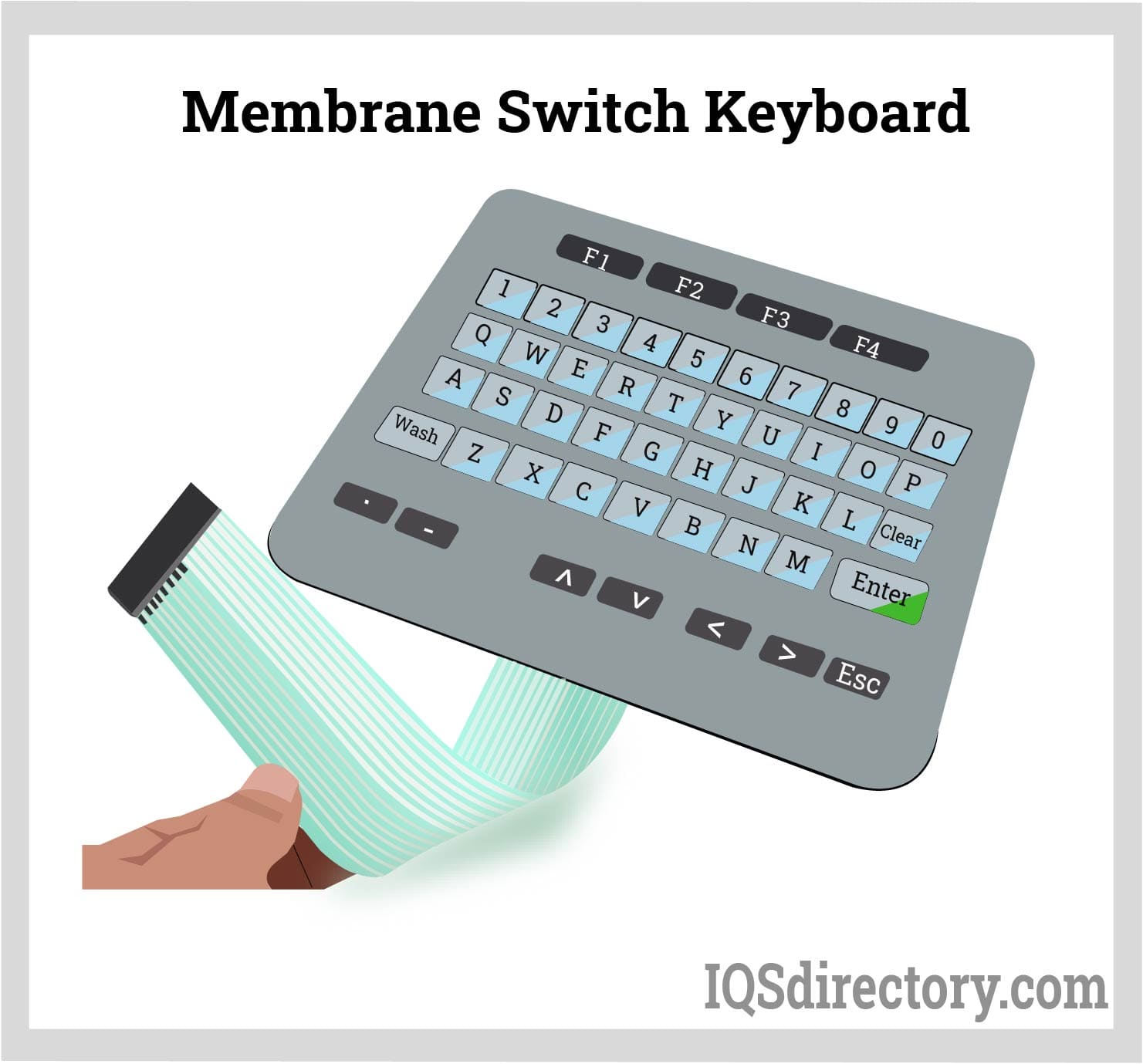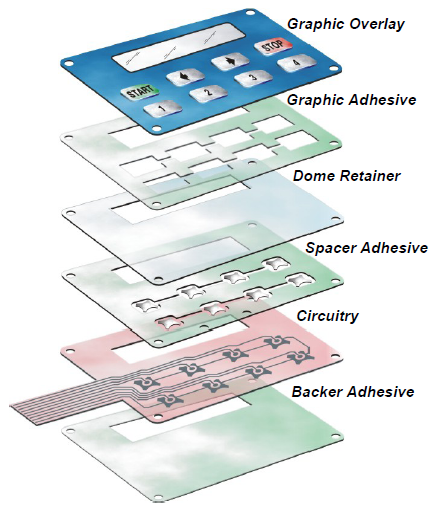Understanding the Significance of Membrane Change in Modern Electronic Devices
Membrane layer switches are integral components in modern electronic gadgets. They offer a mix of capability and design that boosts user interaction. Their lightweight and long lasting nature makes them appropriate for various applications. As industries develop, the need for personalization and progressed functions grows. Understanding just how membrane layer switches contribute to development exposes their importance in forming the future of electronic devices. What exists in advance for this technology?
The Essentials of Membrane Change Innovation
Often forgotten, membrane layer switch modern technology plays a necessary role in the modern-day electronics landscape. These gadgets, made up of numerous layers, function as interface for numerous digital products, ranging from home devices to clinical equipment. A typical membrane layer button includes a graphic overlay, a spacer layer, and a circuit layer, which are carefully set up to create a functional interface.When pressure is used to the overlay, the circuit layer is completed, enabling signals to be transferred to the gadget. This modern technology is understood for its convenience, allowing modification in shape, design, and capability to satisfy particular customer demands. Additionally, membrane layer switches are slim and light-weight, making them suitable for applications where area is a costs. Their resilience and resistance to environmental factors even more boost their allure, guaranteeing they can hold up against extreme problems while preserving functionality. On the whole, membrane layer button technology is essential to creating user-friendly and reliable digital gadgets

Key Advantages of Membrane Switches Over
Membrane layer changes offer several crucial benefits that make them a favored choice in numerous digital applications. Their layout enables for a compact form factor, making it possible for makers to create streamlined and light-weight tools. Additionally, membrane switches are resistant to dirt, moisture, and chemicals, which improves their sturdiness and long life sought after environments. The responsive feedback offered by these switches can boost customer experience, making them intuitive and easy to operate.Furthermore, membrane switches can be personalized with diverse graphics and colors, permitting special branding opportunities. The manufacturing procedure is typically economical, particularly for high-volume manufacturing, as it lowers assembly time and streamlines design. Ultimately, membrane layer switches over require very little upkeep, adding to lower general operational expenses. These advantages highlight their expanding appeal in contemporary electronic devices, where reliability and straightforward user interfaces are crucial.

Applications Throughout Different Industries
The convenience of membrane switches enables their extensive fostering across numerous industries. In the clinical field, they are generally utilized in diagnostic equipment and person monitoring systems, supplying a resilient user interface immune to impurities. The automotive industry uses membrane layer switches for control panel controls, improving individual experience with sleek styles that endure rough problems. In customer electronics, they offer as control board for gadgets such as microwaves and coffee makers, giving a straightforward user interface that is very easy to tidy. The aerospace market uses membrane switches in cockpit controls, where integrity and area performance are vital. In addition, the commercial industry leverages these buttons in machinery and control systems to assure robust operation popular environments. This wide series of applications emphasizes the adaptability of membrane buttons, making them important components in boosting functionality and individual interaction throughout diverse technological landscapes.
Modification and Layout Versatility

Future Trends in Membrane Layer Switch Over Growth
Arising fads in membrane button development indicate a growing focus on boosted capability and assimilation with clever modern technologies. As consumer demand for much more innovative electronic devices increases, manufacturers are concentrating on producing membrane switches that not just offer standard functional functions but also integrate features like touch sensitivity, backlighting, and haptic feedback.Furthermore, advancements in products are anticipated to enhance sturdiness and environmental resistance, making membrane changes suitable for varied applications in sectors such as medical care, auto, and customer electronics. The assimilation of capacitive touch modern technology is likely to come to be a lot more common, permitting sleeker designs and boosted individual interfaces. membrane switch.Additionally, the rise of the Net of Things (IoT) is triggering the advancement of membrane layer changes that can interact wirelessly with various other devices, improving interconnectivity. Overall, the future of membrane layer button technology shows up appealing, driven by advancement and the pursuit of straightforward options
Frequently Asked Questions
Just How Do Membrane Switches Over Compare to Traditional Mechanical Buttons?
Membrane buttons, being more space-efficient and supplying a streamlined layout, contrast with standard mechanical buttons that supply responsive comments. The previous often feature personalized graphics, while the last usually ensure durability and dependability in numerous applications.
What Materials Are Commonly Made Use Of in Membrane Switch Production?
Membrane layer buttons are commonly produced utilizing products such as polyester, polycarbonate, and printed conductive inks. These products give responsiveness, flexibility, and resilience, making them ideal for various applications in electronic gadgets and interface.
Can Membrane Layer Changes Be Repaired or Reused?
Membrane layer buttons can often be fixed, specifically if minor concerns arise, such as adhesive failing or surface damage. Complete reuse is commonly restricted due to use and potential deterioration of products over time.
Just How Do Environmental Variables Affect Membrane Switch Efficiency?
Environmental factors, such as humidity, temperature level, and direct exposure to chemicals, substantially affect membrane button performance. Extreme conditions can lead to deterioration, affecting responsiveness and long life, eventually jeopardizing the capability of the gadget in numerous applications.
What Is the Common Life Expectancy of a Membrane Change?
The regular life expectancy of a membrane switch normally varies from 1 to 5 million actuations, depending upon aspects such as use frequency, environmental problems, and the products utilized in production, impacting longevity and performance longevity. A regular membrane switch is composed of a graphic overlay, a spacer layer, and a circuit layer, which are diligently put together to develop a useful check interface - membrane switch.When pressure is used to the overlay, the circuit layer is completed, allowing signals to be sent to the gadget. The responsive feedback supplied by these buttons can boost customer experience, making them instinctive and easy to operate.Furthermore, membrane layer switches can be personalized with varied graphics and shades, permitting for one-of-a-kind branding chances. As customer need for extra sophisticated electronic gadgets rises, suppliers are concentrating on developing membrane switches that not only offer fundamental functional functions however likewise incorporate functions like touch level of sensitivity, backlighting, and haptic feedback.Furthermore, advancements in materials are expected to enhance resilience and environmental resistance, making membrane switches over suitable for diverse applications in industries such as health care, automobile, and consumer electronics. The assimilation of capacitive touch modern technology is likely to end up being more common, enabling for sleeker styles and improved user interfaces.Additionally, the surge of the Web of Things (IoT) is motivating the More Help development of membrane switches that can connect wirelessly with various other gadgets, improving interconnectivity. Membrane switches, being much more space-efficient and offering a streamlined style, contrast with conventional mechanical switches that provide responsive comments